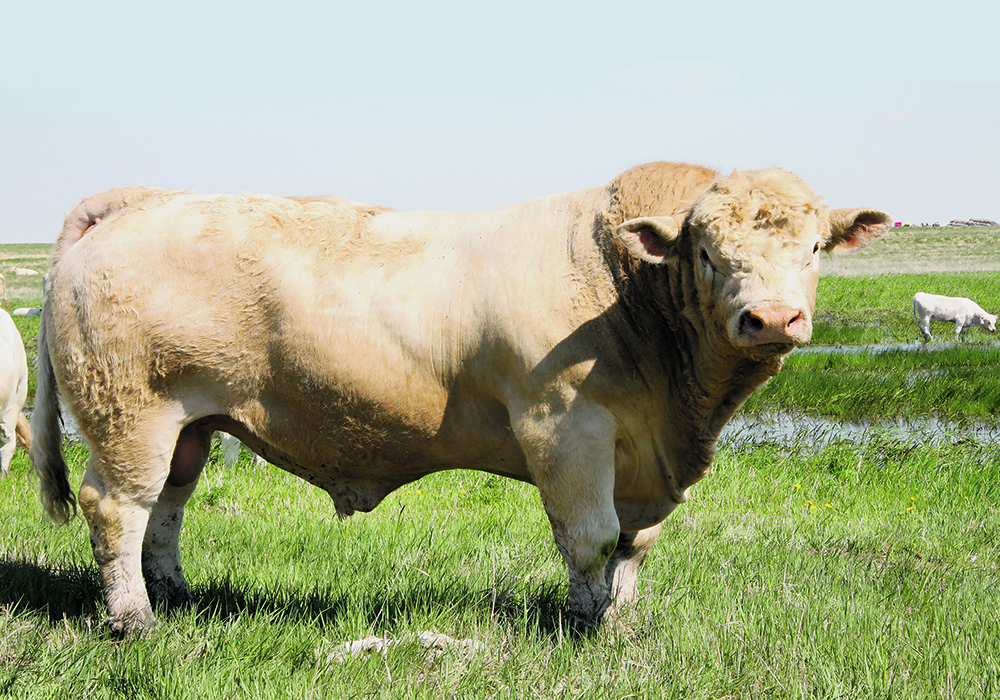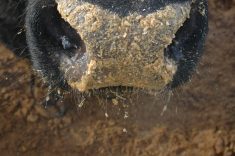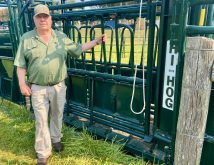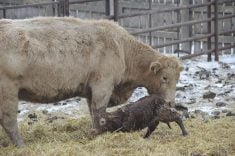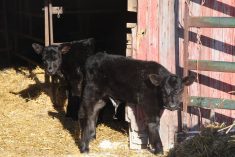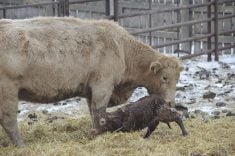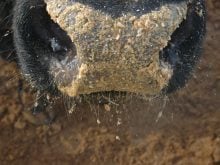Researchers fed bulls feed with different levels of mycotoxin infection to see if it affected their reproductive ability
The reproductive soundness of bulls is not affected when they eat feed contaminated by ergot.
Vanessa Cowan conducted a recent study that reached those conclusions at the Western College of Veterinary Medicine.
She said they conducted the study after producers expressed concern that ergot in feed was affecting bull fertility and there was little research on the topic.
“The goal of this study was to see if concentrations of ergot alkaloids in grain that are currently permissible by Canadian standards for cattle feed had any effects on breeding soundness of bulls,” Cowan said.
Read Also

Canadian Food Inspection Agency slammed for handling of bovine tuberculosis case
The federal government leans heavily on producers to “take one for the team” and risk their livelihoods without any reassurance of support.
Ergot alkaloids come from the fungi Claviceps purpurea, which can infect different types of grain that cattle eat.
When consumed over time, ergot can cause toxicity, constricting blood vessels. In female cattle, ergot can suppress hormone secretion and reduce pregnancy rates, as well as cause other issues.
Issues with ergot contamination in grain vary each year, but Cowan said it’s the most requested test at their toxicology lab.
For the study, WCVM researchers split bulls into two different groups. Both groups ate the same diet for 12 weeks early in the study. They then fed one group high-ergot feed, at 2,200 micrograms per kilogram for nine weeks. The other group consumed feed with half the ergot concentration.
The Canadian Food Inspection Agency has set the allowable concentration of ergot for cattle at two to three parts per million, which equals 2,000 to 3,000 micrograms per kg.
While the reproductive health of bulls may not be affected by consuming feed with ergot contamination, other recent research at the University of Saskatchewan has concluded that gain and health of feedlot animals is affected at the allowable concentrations, and recommended no more than one part per million of ergot alkaloid in feed for feedlot animals.
The bulls were followed for another 10 weeks after the study to see if there were long-lasting effects on their sperm production. Researchers measured sperm motility, concentration and morphology, as well as rectal temperatures and total scrotal circumference.
“At the end of it, what we found is that there seems to be a very subtle, if any, effect of ergot alkaloids on sperm production and breeding soundness in these bulls,” Cowan said.
She said the group of bulls consuming high-ergot feed did not have less viable sperm after the study. The higher ergot could have affected the ability of the sperm to move efficiently, but the morphology and development remained the same.
However, there was also decreased plasma prolactin in both treatment groups. Plasma prolactin is a hormone made by the pituitary gland. In females, this hormone produces milk during pregnancy. Cowan said they aren’t sure how much of a concern that is for bulls, but it’s an area that could be investigated further.
“Because (plasma prolactin) is such an important hormone in lactation, there are consequences of it being decreased on the female side, like reduced milk production.”
Cowan said she hoped the results of the study are beneficial.
“We thought that was good news in the sense that, at least on the bull side of things, that things don’t seem to be strongly affected.”
In the future, Cowan said they would like to assess whether ergot affects cryo-preserved semen samples or artificially inseminated cows.

